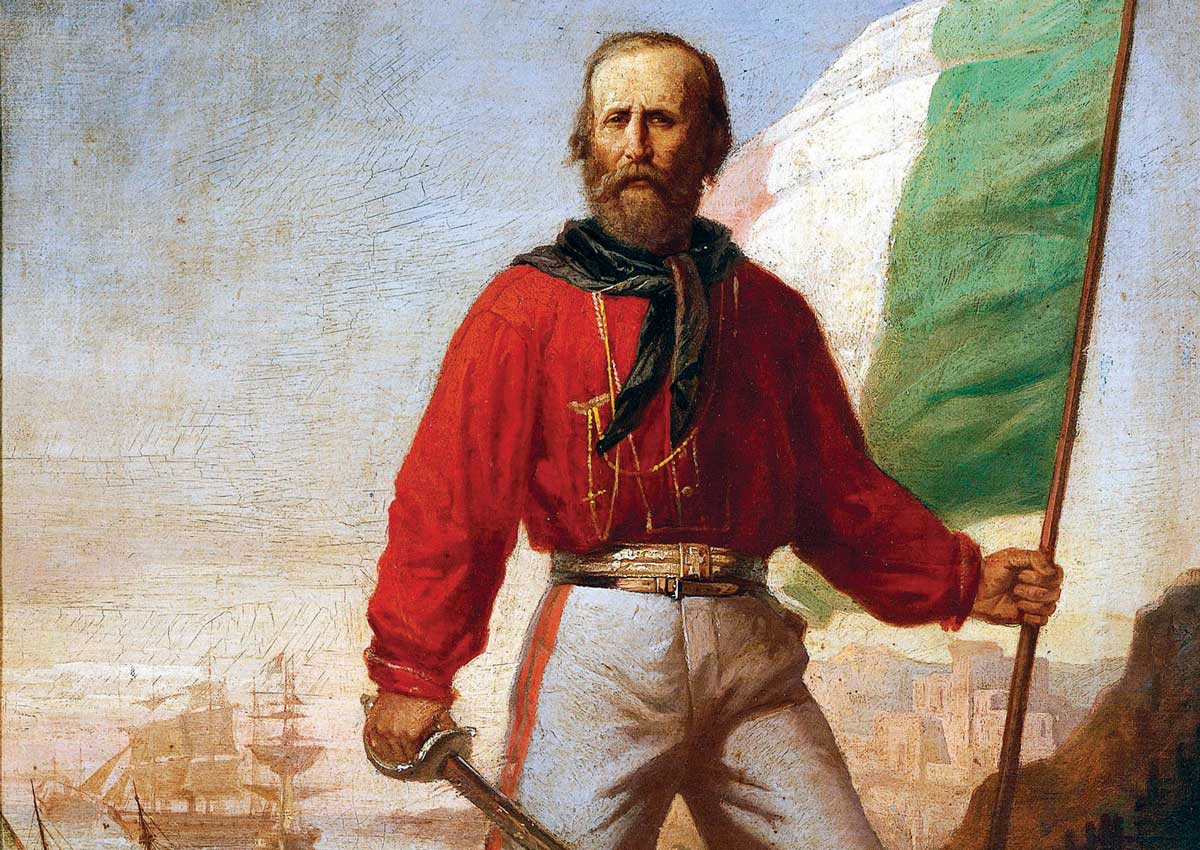cultură şi spiritualitate
A new cultural history of Sicily, the key to the Mediterranean.
https://www.historytoday.com/archive/review/sun-and-stone

Giuseppe Garibaldi during the landing of the Thousand at Marsala (details), 11th May 1860, by Gerolamo Induno, 19th century © Bridgeman Images.
Throughout the history of the human race no land and no people have suffered so terribly from slavery, from foreign conquests and oppressions, and none have struggled so irrepressibly for emancipation as Sicily and the Sicilians.
So wrote Karl Marx in the New York Daily Tribune on 17 May 1860, just a week after Giuseppe Garibaldi and his rag-tag army of 1,000 ‘red shirts’ landed in Marsala, on Sicily’s west coast, to liberate the island from the exploitative Bourbon monarchy, who ruled with oppressive force from Naples. Garibaldi’s ultimate aim was the unification of Italy, in the name of Victor Emanuel II, the Savoy monarch, later the first king of Italy. These momentous events, and countless others from the past 2,800 years, are covered in Jamie Mackay’s excellent new book, The Invention of Sicily.
Mackay gives us a refreshingly new interpretation of Sicily’s intriguing and all too frequently tragic history. What really comes through is the author’s subtle understanding and genuine appreciation of the Sicilians themselves. Mackay’s prose has none of John Julius Norwich’s relaxed, avuncular charm, nor does he give us much in-depth discussion of Sicily’s rich and resplendent art and architecture, but The Invention of Sicily is no journalistic parachute piece, with the author dropping in, getting a ‘sense’ of the place and producing a sugar-coated narrative of candied fruit and cannoli, drenched in sunlight. The Invention of Sicily is an accomplished attempt to understand the Mediterranean’s most centrally placed and oft-conquered island. Mackay appears to know Sicily well and seems captivated by it.
To conquer Sicily was to control the Mediterranean and Mackay skilfully navigates us through the various periods of Greek, Carthaginian, Roman, Muslim, Norman, French, Spanish and Fascist rule on the Trinacrian isle. The Trinacria is the ancient three-legged symbol, which first appears on a small ceramic bowl from the seventh century BC, found near Agrigento on Sicily’s southern coast. Since the year 2000 it has been officially adopted as part of the Sicilian flag. At its centre, the symbol has the monstrous, dismembered head of the gorgon, Medusa, surrounded by ears of wheat and the three legs arranged in rotational symmetry, signifying the triangular island of Sicily, its fertility and its mythical protector, whose very stare could supposedly turn the viewer to stone. Yet it would seem that Medusa, frequently placed on ancient Greek temples in Sicily to repel evil, failed in her duty to protect the island’s inhabitants. Indeed, the slightly perverse, but typically Sicilian, logic of the severed head of a gorgon as protector was long ago explained by Ross Holloway: ‘In its horrid self, [it was] the embodiment of the Evil Eye, and consequently, by the logic of superstition, an effective antidote.’
Mackay tells us about this and many other Sicilian myths and legends, as well as the sad fate of those unfortunates more recently encased in stone, not from looking at the gorgon’s terrifying grimace, but by falling foul of the Cosa Nostra’s corrupt codes of honour. However, while Mackay devotes a chapter to the return of the Mafia in the 1940s (after its brutal repression under Mussolini), he does not take the easy route of macabre tales of Mafioso misdeeds. Instead, throughout the book, Mackay tries to unpick origin, meaning and reason.
It is a shame that he devotes a mere chapter to the years 800 BC to AD 826, from the great Greek city states to the Muslim conquest of the island. Similarly, it would have been good to see more reference to the fascinating recent scholarship on the influence of the Maghreb and al Andalus on the architectural and cultural development of Muslim and Norman Sicily. There are occasional factual errors, but these do not detract from the book’s essential qualities. Indeed, Mackay’s chapter on Frederick II, King of Sicily, twice excommunicated Holy Roman Emperor and the first modern European (according to Nietzsche), is brilliantly entertaining. The cultural history of Sicily presented here is the history of Europe and that of the wider Mediterranean and the Near Middle East.
The Invention of Sicily: A Mediterranean History
Jamie Mackay
Verso 304pp £16.99
Buy from bookshop.org (affiliate link)
Philippa Joseph is a tutor in art history at the Department for Continuing Education, University of Oxford and a Senior Fellow at the Institute of Historical Research.
Adaugă un comentariu
© 2024 Created by altmarius.
Oferit de
![]()
Embleme | Raportare eroare | Termeni de utilizare a serviciilor













Pentru a putea adăuga comentarii trebuie să fii membru al altmarius !
Alătură-te reţelei altmarius